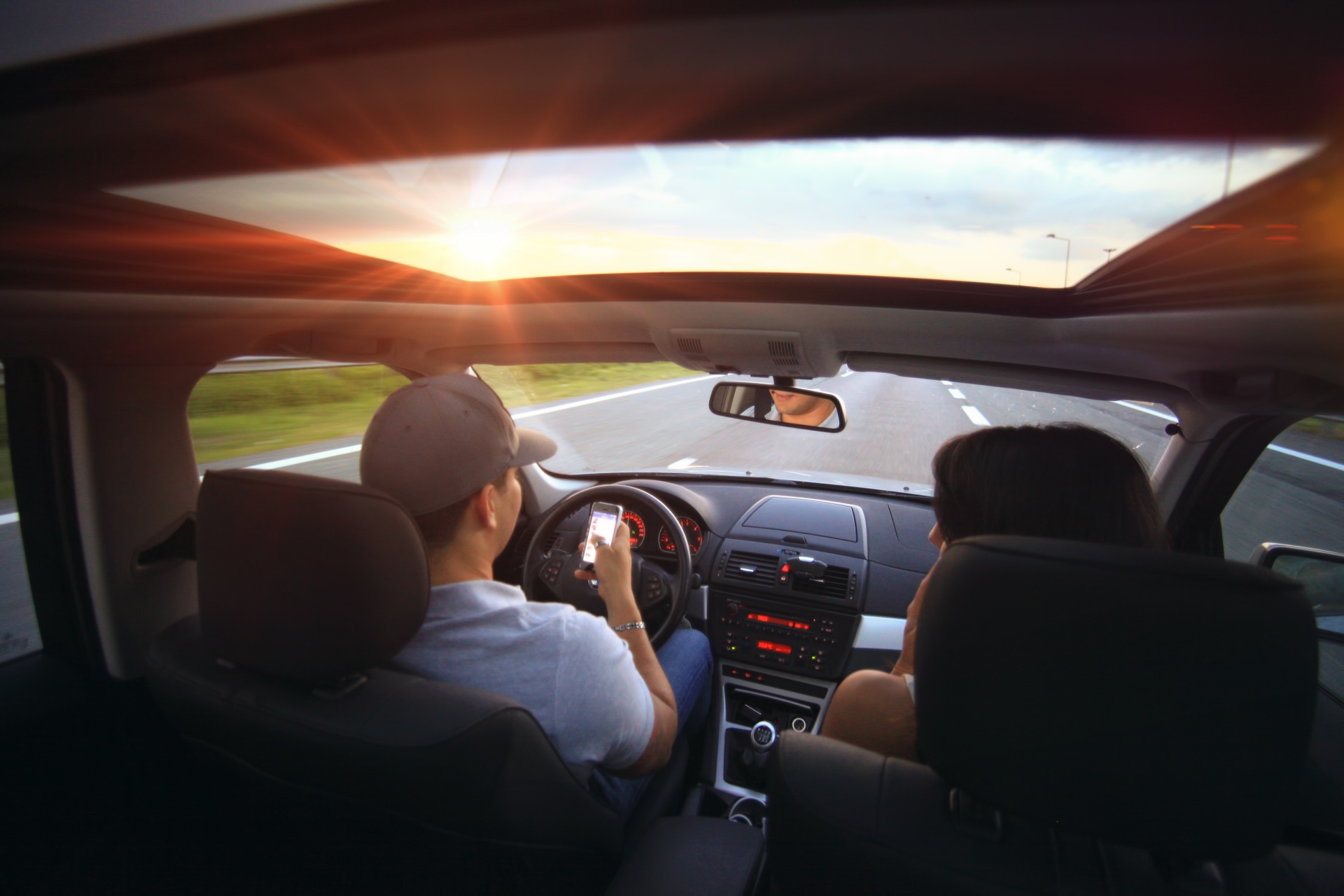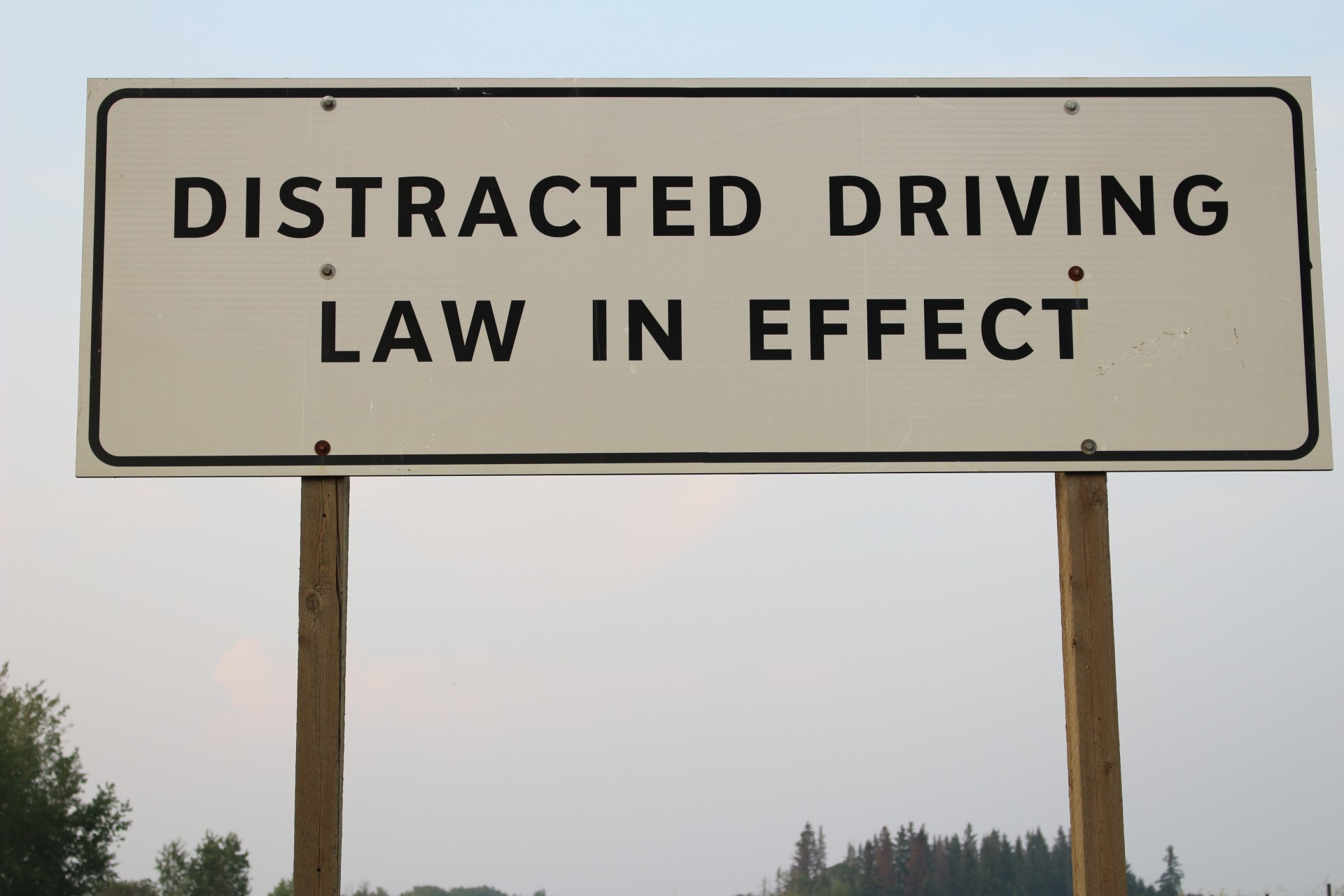A large amount of research has been conducted in recent years about the causes and hazards of distracted driving. Many people will be surprised by some of the conclusions of this research - that holding and dialing a mobile device while driving is not the only thing, or even the main thing, that is distracting to drivers.

The misconception that talking or texting from your cellphone while driving is the only cause of distracted driving is wide spread, but research shows that anything that causes a loss of focus away from the primary task of piloting your vehicle down the road is distracted driving. This could be as simple as changing the channel on the car radio, or having a conversation with your passenger.
Some of the most common distractions include the following:
- Being generally distracted or “lost in thought”
- Cell phone or other mobile device usage
- GPS and navigation
- Adjusting a radio or other audio device
- Outside person, object or event
- Talking and interacting with passengers
- Eating and drinking
- Adjusting the heating and air conditioning
- Adjusting things like mirrors or seatbelts
- Moving objects from one location to another in the vehicle
- Reading, including maps
- Watching a video
- Grooming
- Smoking
Distractions to driving can be broken down into three categories, cognitive, manual, and visual (Centers for Disease Control and Prevention).
- A cognitive distraction is when your mind wanders away from the task of driving.
- Manual distractions are those where you take your hands off the wheel.
- Visual distractions are those where you focus your eyes away from the road.
Many of the common driving distractions fall into more than one of these categories. Usage of mobile devices is one that causes cognitive, manual, and visual distractions, but it is not the only one. Adjusting your car radio or your climate controls, or adjusting your mirrors also fall into all three distraction categories.
One thing that does differentiate talking and texting from some of the other distractions is how long the distraction can last. This is related to the cognitive part of the distraction. When you are talking or texting, you are using a large part of your time focused on the subject of the conversation, thinking about what is being discussed and formulating your responses. This causes you to concentrate less on driving and your ability to process all of the changing road conditions is reduced, causing your driving reaction times to increase. The University of Utah has published research that indicates that drivers and using a cell phone, hand held or hands free, had reaction times similar to drivers who were under the influence of alcohol.
It is important to reinforce the fact that the University of Utah study found it makes no difference if the driver was holding the cell phone or if the cell phone was being used hands free. This is because the distraction is cognitive, not manual or physical distraction as many people believe.
When texting and driving, you compound the distraction hazards because all three distraction categories are in play. Texting involves, cognitive, manual, and visual distractions. Virginia Tech found that texting can increase the chances of a crash by 23 times over non-distracted driving.
The Federal Communications Commission (FCC) has published information on distracted driving related to electronic device usage. The FCC has a good summary, in PDF format, that summarizes of the key points and can be downloaded from their web site.
The Automobile Club (AAA) has published a large volume of information on distracted driving hazards. In a recent AAA study, their research found “drivers who have been in at least one crash in the past two years are significantly more likely to engage in risky behaviors like speeding or texting.” This indicates drivers do not fully understand the hazards associated with distracted driving and have become complacent when driving. In the world of Job Safety and job hazard analysis, complacency is a very bad thing.

Governors Highway Safety Association publishes a list of states that have distracted driving laws, as well as information about the dangers of cell phone usage while driving. Details regarding individual state laws have been summarized by the Governors Highway Safety Association. These summaries and lists are updated often, so be sure to double check to make sure you have the most current information.
Your Job Safety Analysis should consider that some of the same factors that cause distracted driving might also be applicable to other hazards and risks at your job site. For example, cognitive distractions, including lack of sleep and fatigue, may amplify the level of risk to existing job site hazards unrelated to driving.
In addition to including distracted driving as a hazard in the Job Safety Analysis, distractions are also a topic that should be discussed during job site tailgate meetings. When preparing for field work, it may be useful to have pre-field discussions around distracted driving. The National Safety Council has published some videos that maybe helpful for pre-filed work discussions.
The public and many site workers have the mistaken belief that cell phone usage is the only cause of distracted driving, and reinforcement of the many types of distractions may be appropriate for your workforce, both site workers and office staff. It is clear from the published studies referenced in this article, and many others that are easily found on authoritative websites, that there is a wide array of items that can distract drivers and should be considered as hazards during the preparation of your Job Safety Analysis.
JSABuilder.com is an easy to use on-line job safety analysis app to assist in preparing your JSA. Set up a free trial account today and follow us on Twitter @JSABuilder, where we Tweet about Health and Safety, provide Safety tips, and updates on current Health and Safety topics.